QUICK NAVIGATION
- About The Japandi Interior Design Style
- The Birth of Japandi Interior Design
- Characteristics of Japandi Theme
- Colors and Patterns in Japandi
- Furniture and Accessories
- Adapting Japandi Interior Design to Singaporean Homes: Condos and HDB Flats
- Japandi in HDB Flats
- Maximizing Space in Condos
- A Final Thought
About The Japandi Interior Design Style
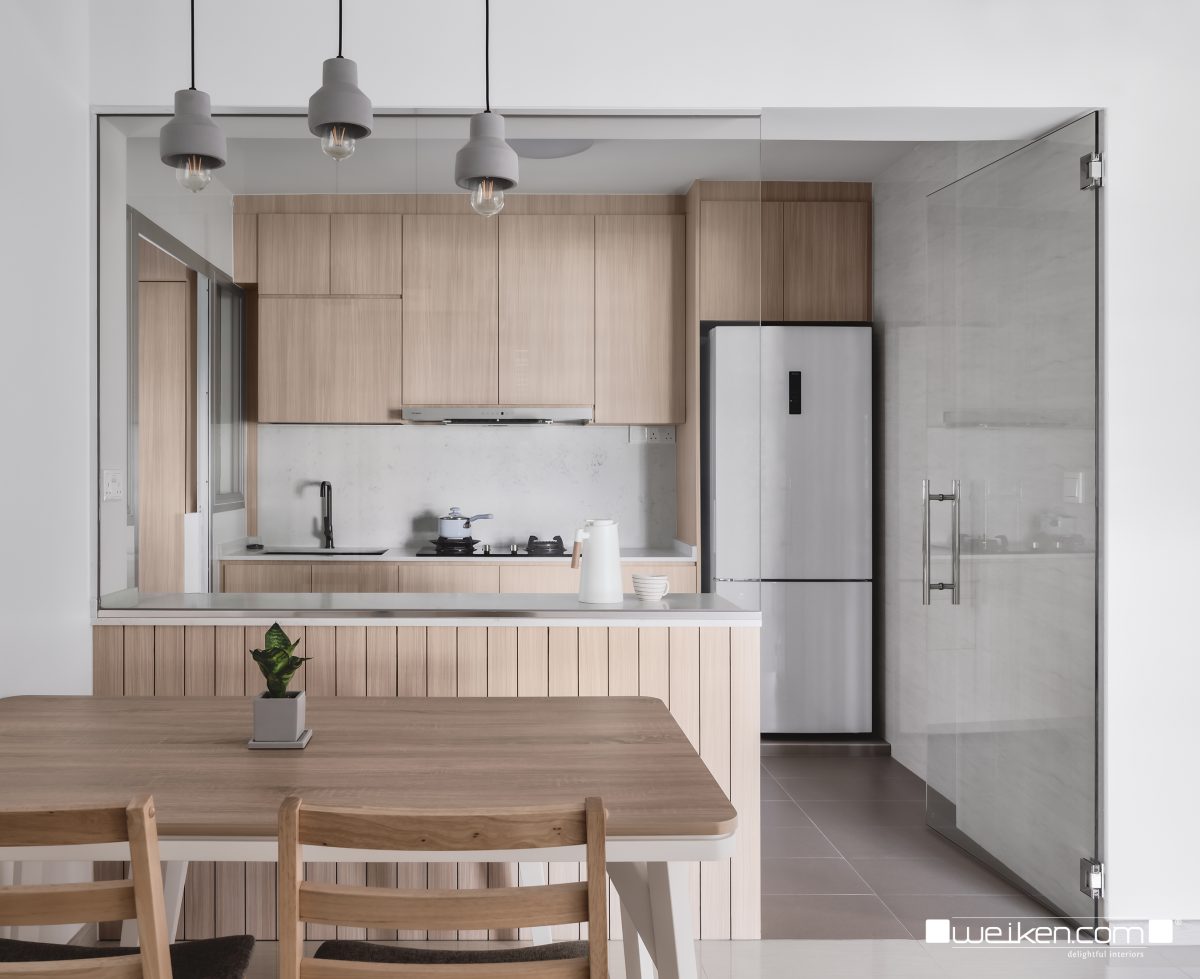
We now live in the modern era where the hustle and bustle of city life has become the norm. As more and more people are transferring to the city, life also becomes busier, fast-paced, and stressful. If you live in the city, you can probably attest to this. In our attempt to find tranquility and peace in everyday life, we turn to transforming our interior homes into a haven where we can relax and relish after a long tiring day at work. This is where interior design styles like Japandi enter the scene.
This distinct blend of two complementary styles frequently becomes a way of life, and its principles and philosophy can serve as a guide to live a simple yet meaningful life. In this blog, we will delve deeper into the motif, discussing its history, qualities, and how to achieve the Japandi interior design look in your own Singaporean home. Let’s get right into it!
The Birth of Japandi Interior Design
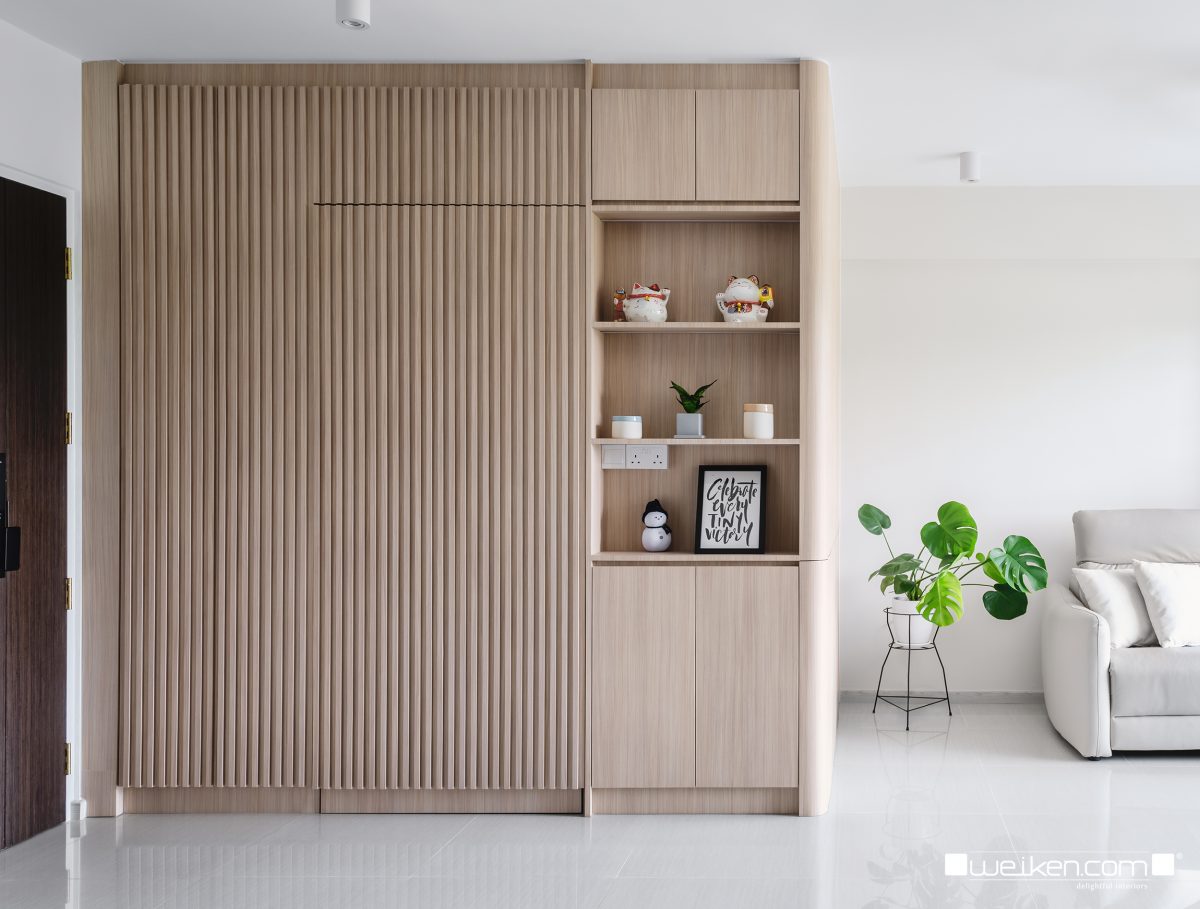
This interior style can be traced back to the mid-twentieth century when minimalism and simplicity began to take root in design cultures around the world. Japanese design has a long history that is steeped in Zen philosophy and is distinguished by a strong connection to nature, minimalism, and an emphasis on practicality.
Scandinavian design, on the other hand, has a tradition of functionalism, warmth, and a love of natural materials. Because both have a strong respect for minimalism and an emphasis on well-being, the union of these two styles was natural.
Japandi interior design is fundamentally about achieving harmony and balance in your living environment. It’s an encouragement to declutter, simplify, and slow down. In a world inundated with distractions, Japandi provides a refuge of serenity and tranquility.
Characteristics of Japandi Theme
Minimalistic Aesthetics
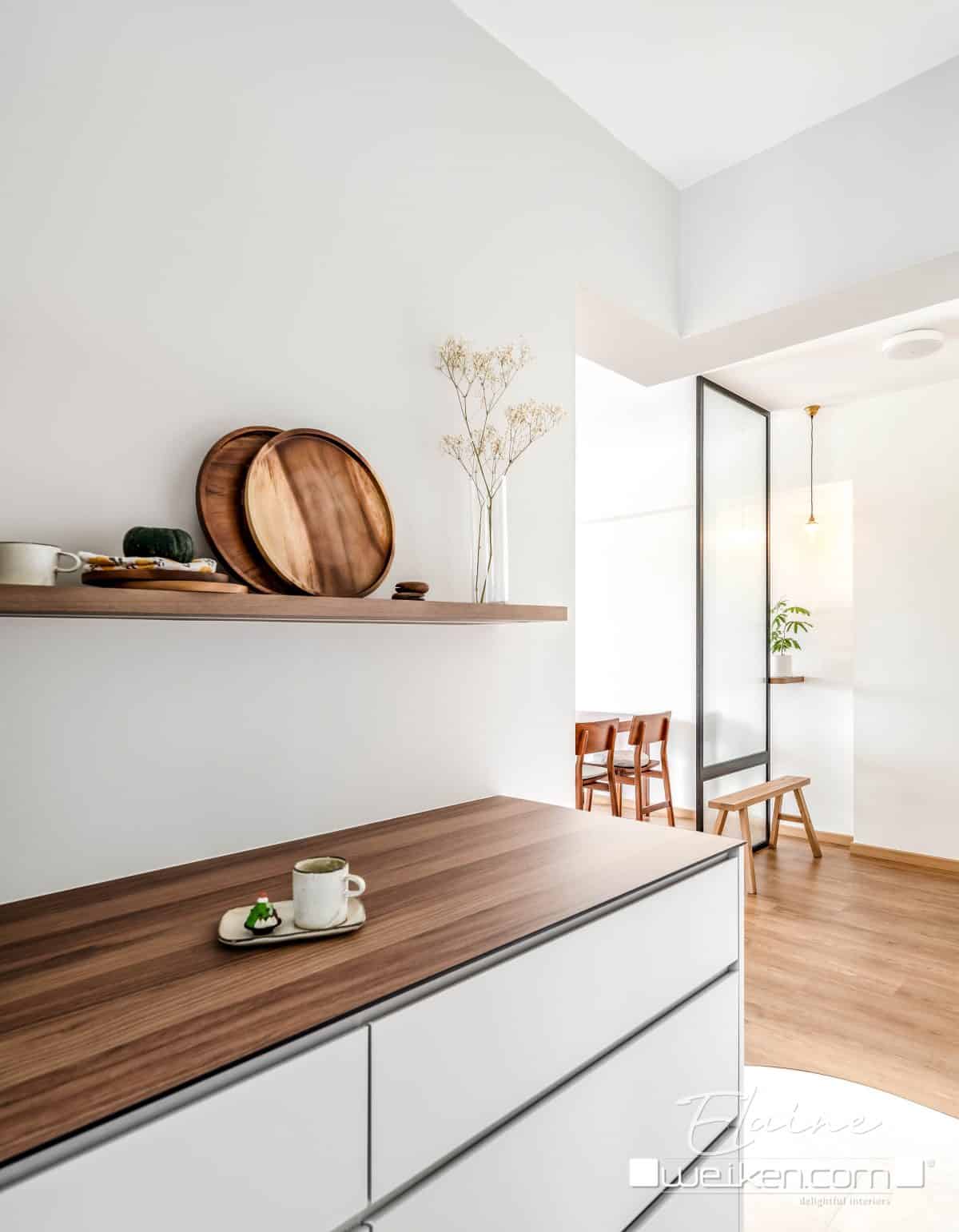
The hallmark of Japandi aesthetics is minimalism and Scandinavian interior design is minimalism. It embraces the “less is more philosophy”, emphasizing that the fewer stuff and decorative elements you have in your home, the simpler life will be. There will be less clutter and your everyday routine will be more productive as you can easily focus on the essentials.
Natural Materials
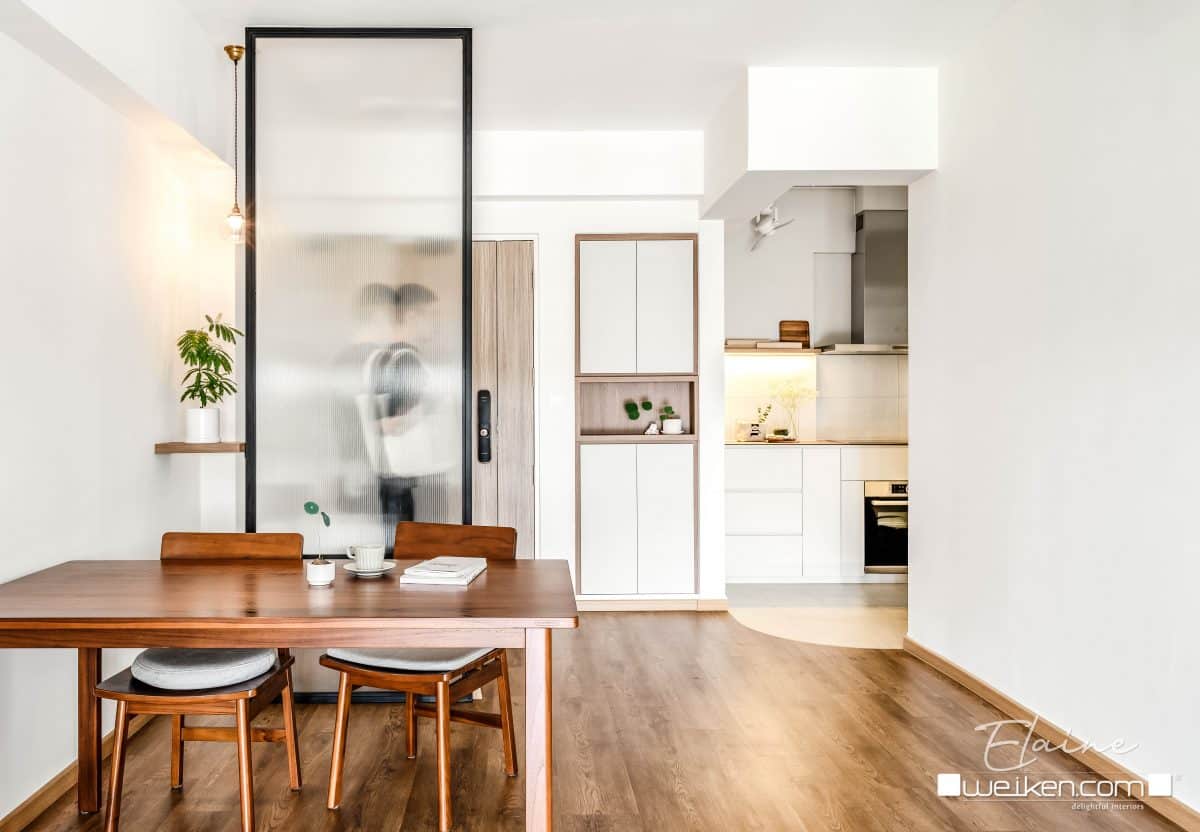
Wood, stone, and bamboo are commonly used to create a sense of warmth and connection with nature. The grain and texture of these materials play a pivotal role in Japandi interiors. The use of natural materials is also another way to keep the interiors connected and grounded in nature which is one of the basic principles of Zen.
Neutral Color Palette
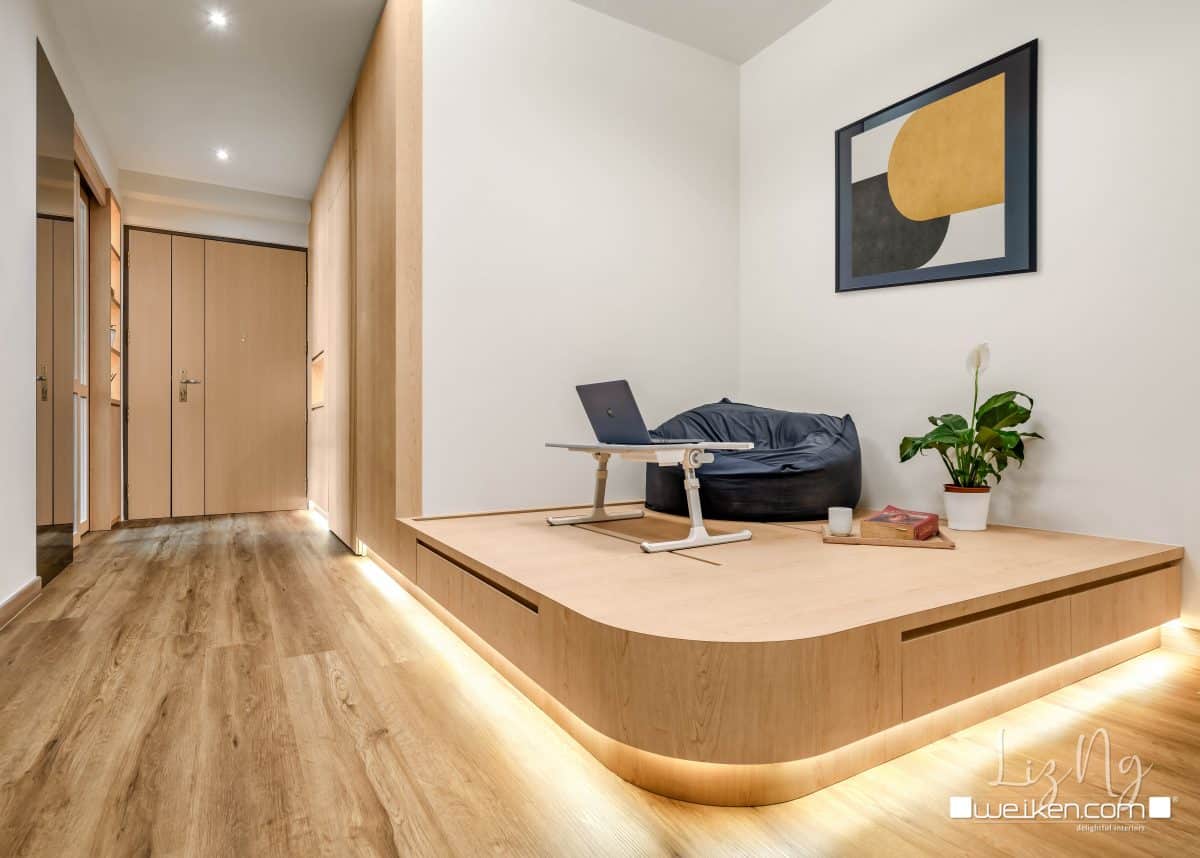
Selecting colors in a Japandi interior is pretty straightforward. You don’t have to think long and hard about what colors to mix and match. The color palette is subdued, featuring earthy tones, soft grays, and muted pastels. This choice of colors enhances the calming atmosphere and promotes relaxation.
Functional Design
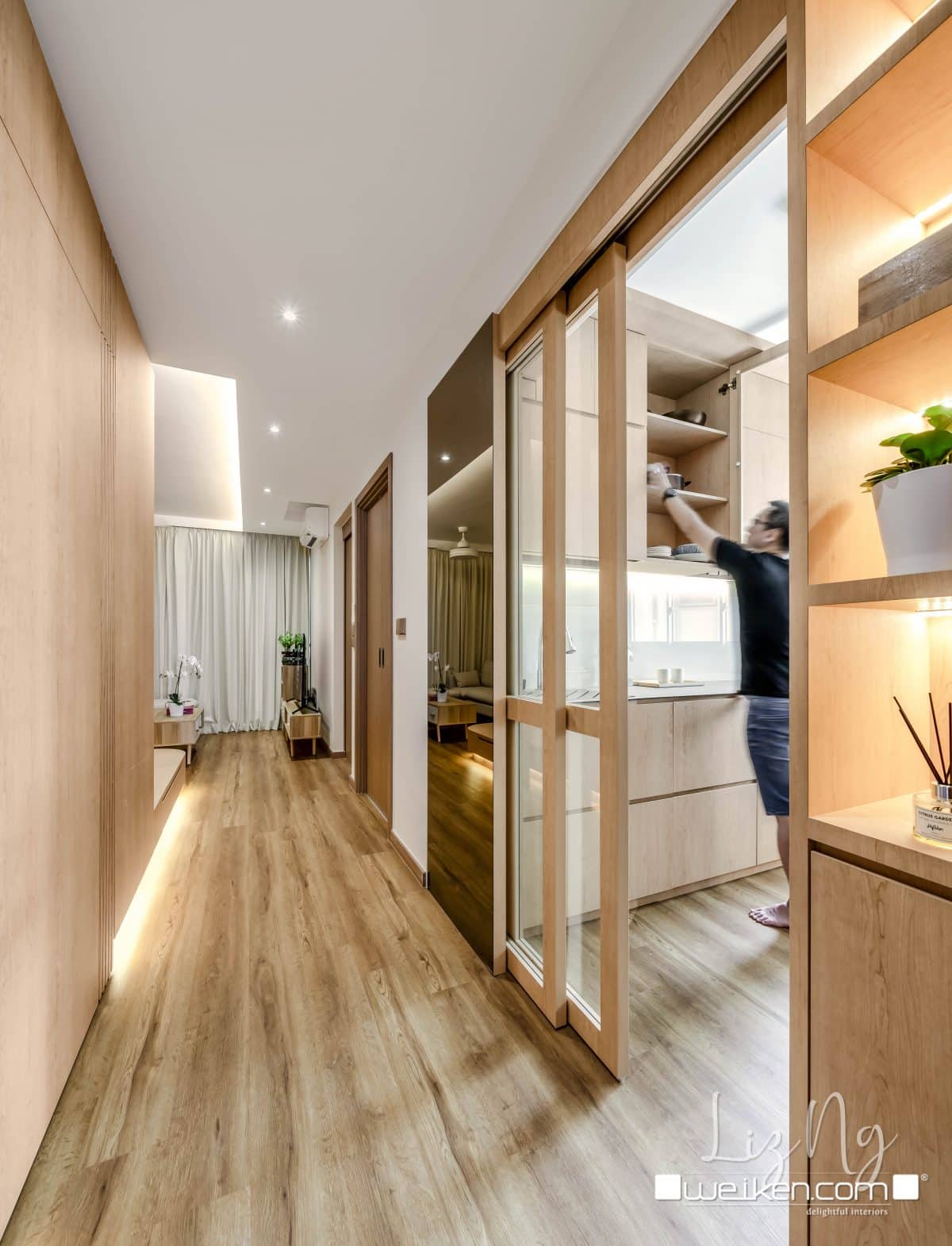
Furniture and accessories are not only aesthetically pleasing but also highly functional. Every piece serves a purpose, eliminating unnecessary clutter. You’ll often see furniture made of natural materials like solid wood, rattan, and other simple yet iconic pieces. When opting for Japandi, your furniture should be characterized by sleek and simple lines with hard edges balanced out by soft textiles.
Indoor Greenery
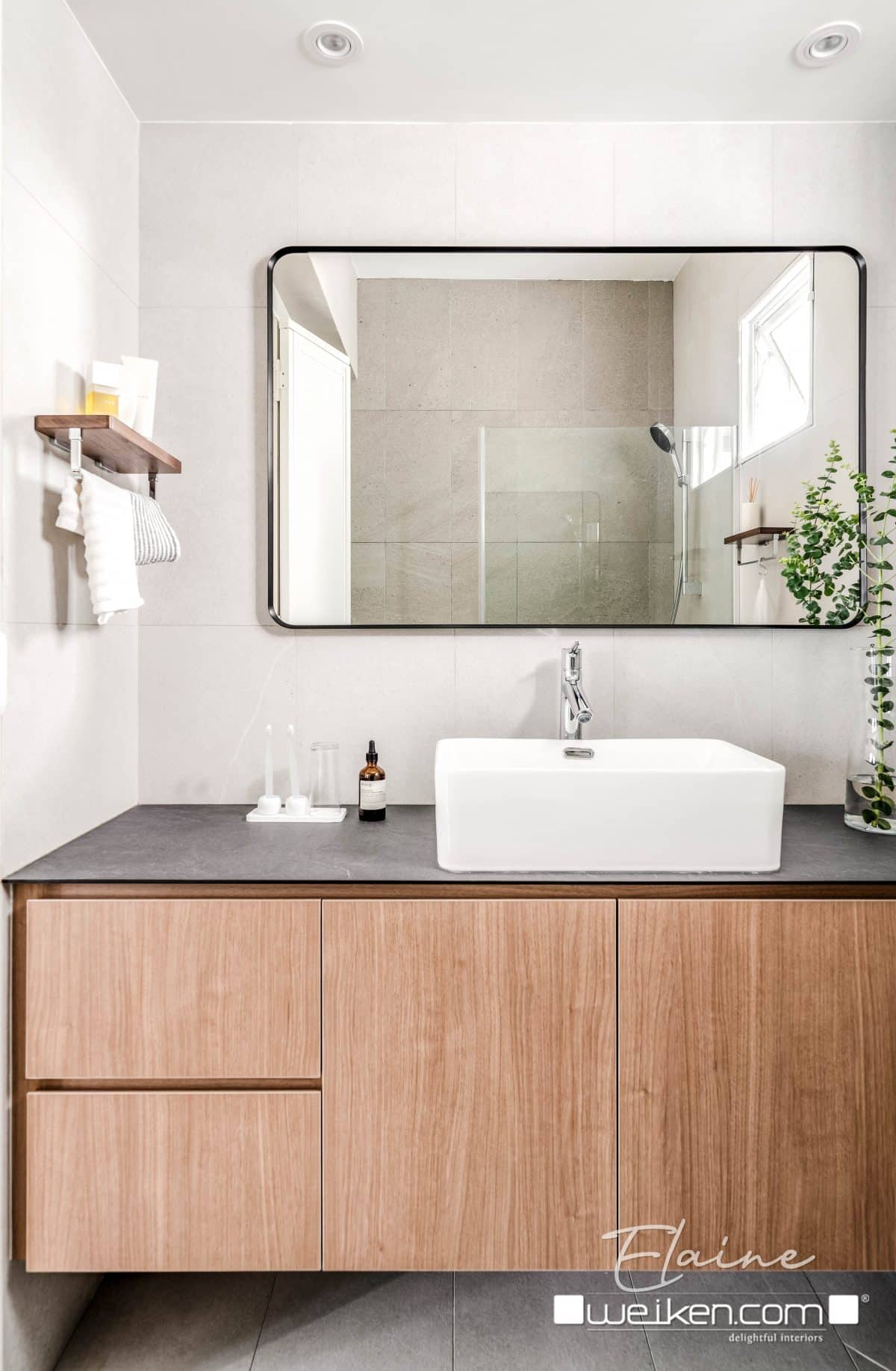
In a Japandi interior, you’ll see a lot of indoor plants, such as bonsai trees or succulents. You can add these to your décor to add a touch of nature indoors. Adding greeneries also reflects the Japanese concept of “wabi-sabi,” finding beauty in imperfection.
Geometric Shapes
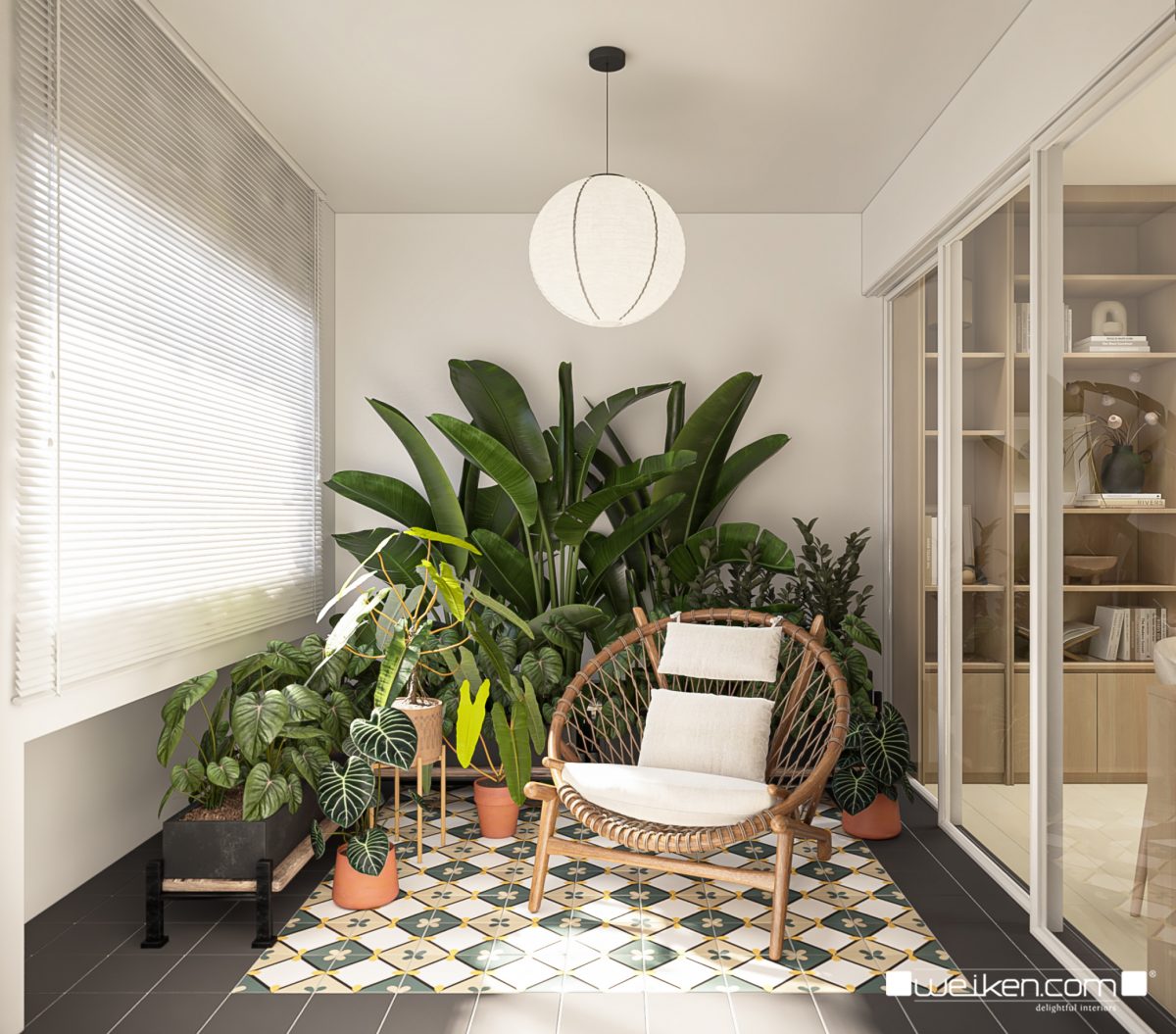
Adding geometric shapes is something you can do to add a bit of creativity and personality to your minimalist space. Simple, geometric shapes add visual interest without overwhelming the space. Circular mirrors and square cushions are examples of this design element.
Colors and Patterns in Japandi
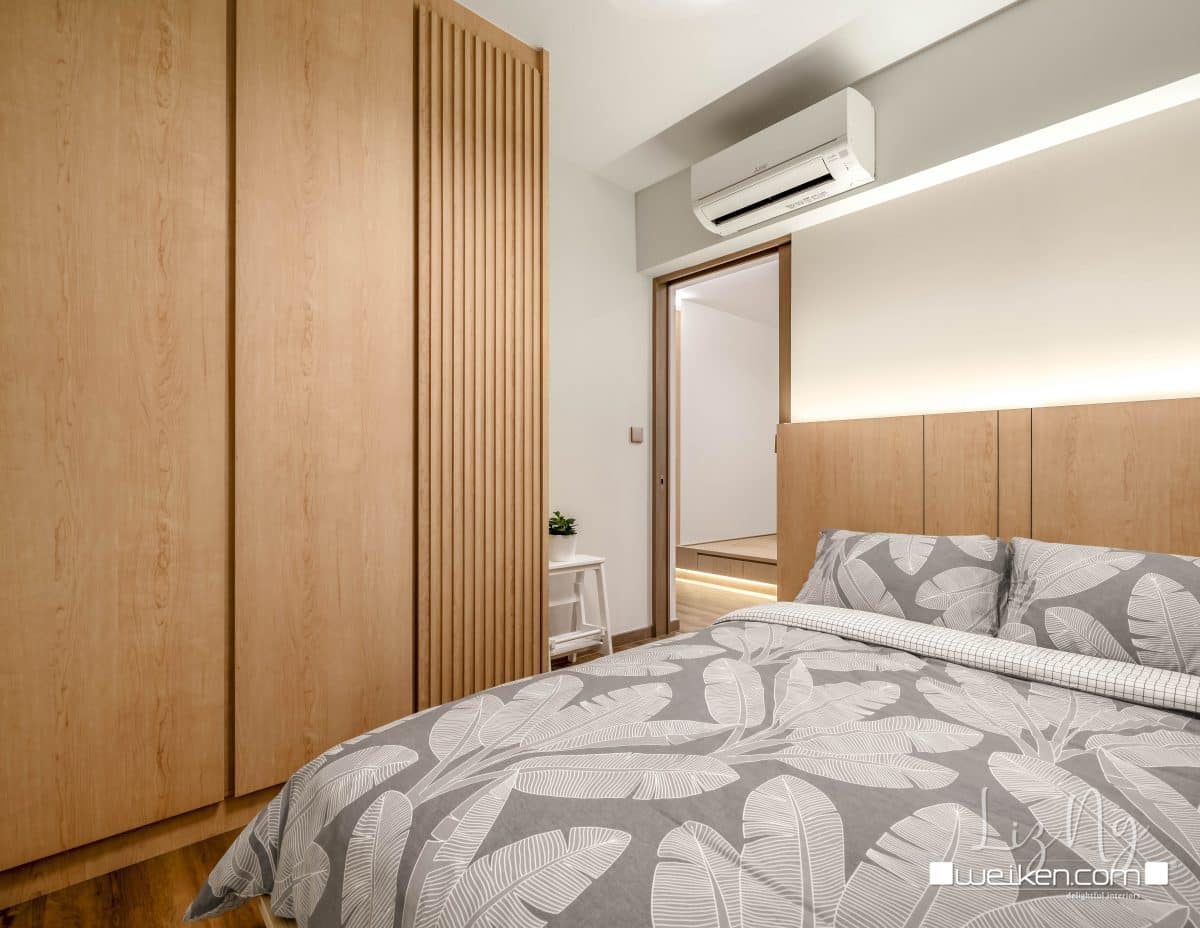
As mentioned earlier, the color palette in Japandi interior design is deliberately neutral. It includes shades like soft grays, muted blues, pale pinks, and warm beige. These colors create a soothing backdrop and evoke a sense of calm.
Patterns in Japandi interiors are minimalistic, with a preference for subtle, organic motifs. Think of delicate cherry blossom prints or simple, repetitive geometric shapes. The key is to maintain balance and avoid overwhelming the space with bold patterns.
Furniture and Accessories
Japandi furniture embodies the ethos of both Japanese and Scandinavian design traditions. Here are some common pieces you’ll find in a Japandi-inspired home.
Low-Slung Furniture
Low-profile sofas, beds, and tables are quintessential in Japandi design. They promote a sense of openness and encourage a connection with the floor.
Natural Wood
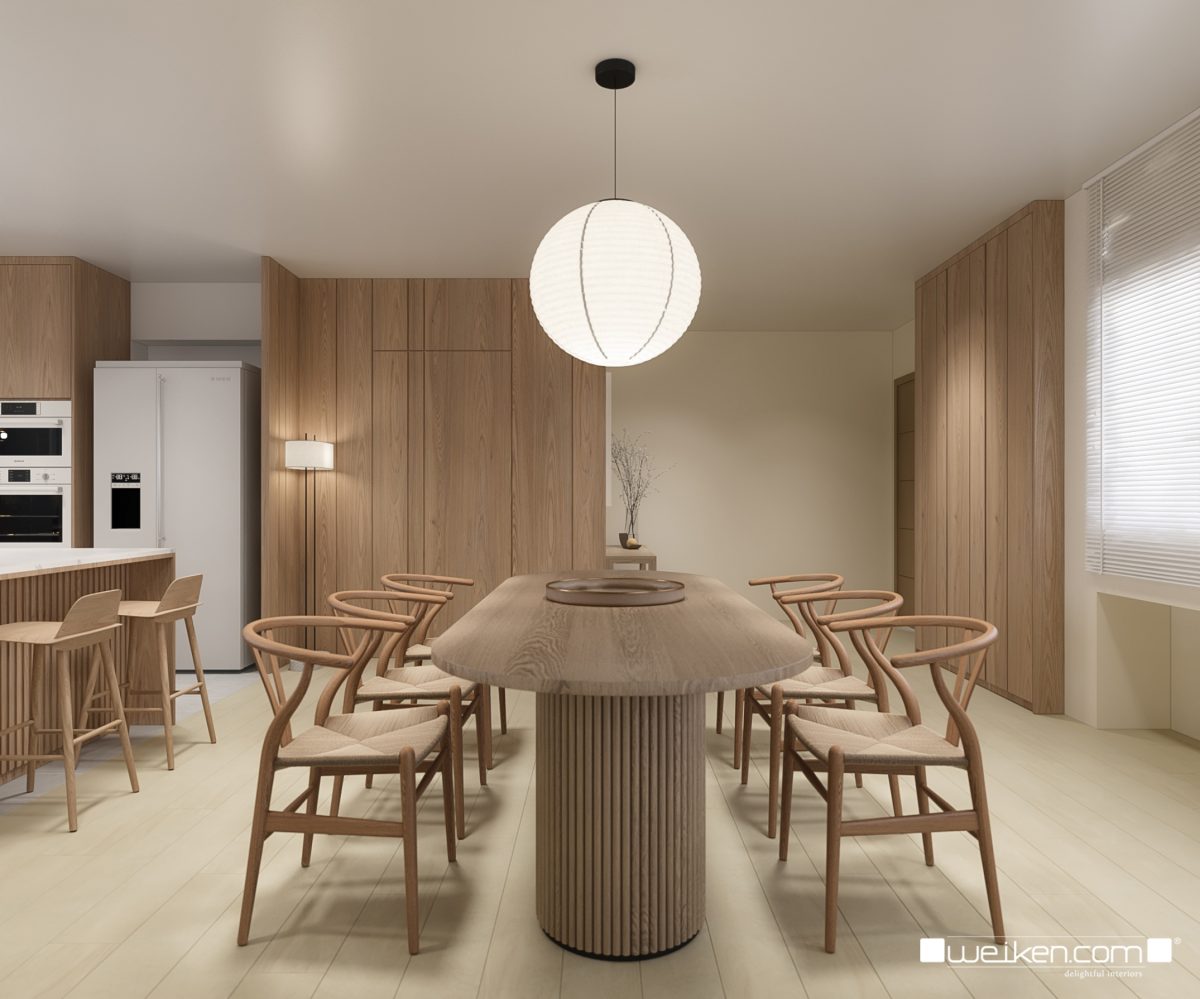
Furniture made from light or dark wood, often showcasing grain, is a staple. Oak, teak, and walnut are popular choices.
Functional Simplicity
Cabinets and storage units prioritize functionality. Sliding doors and hidden compartments keep clutter at bay.
Textured Fabrics
Soft textiles like linen, cotton, and wool are favored for upholstery and cushions. These add warmth and tactile comfort to the minimalist setting.
Accessories in Japandi design are carefully curated. Less is more, so choose items that hold personal meaning and resonate with the design philosophy. Ceramic vases, woven baskets, and handmade pottery are common choices. Consider incorporating bamboo trays, shoji screens, or paper lanterns to infuse a touch of Japanese aesthetic.
Adapting Japandi Interior Design to Singaporean Homes: Condos and HDB Flats
Singapore, with its diverse urban landscapes ranging from high-rise condos to HDB (Housing and Development Board) flats, offers a unique canvas for incorporating Japandi interior design. While the fundamentals of Japandi remain consistent, there are some practical considerations and creative adaptations to make this style work seamlessly in Singaporean homes.
Japandi in HDB Flats
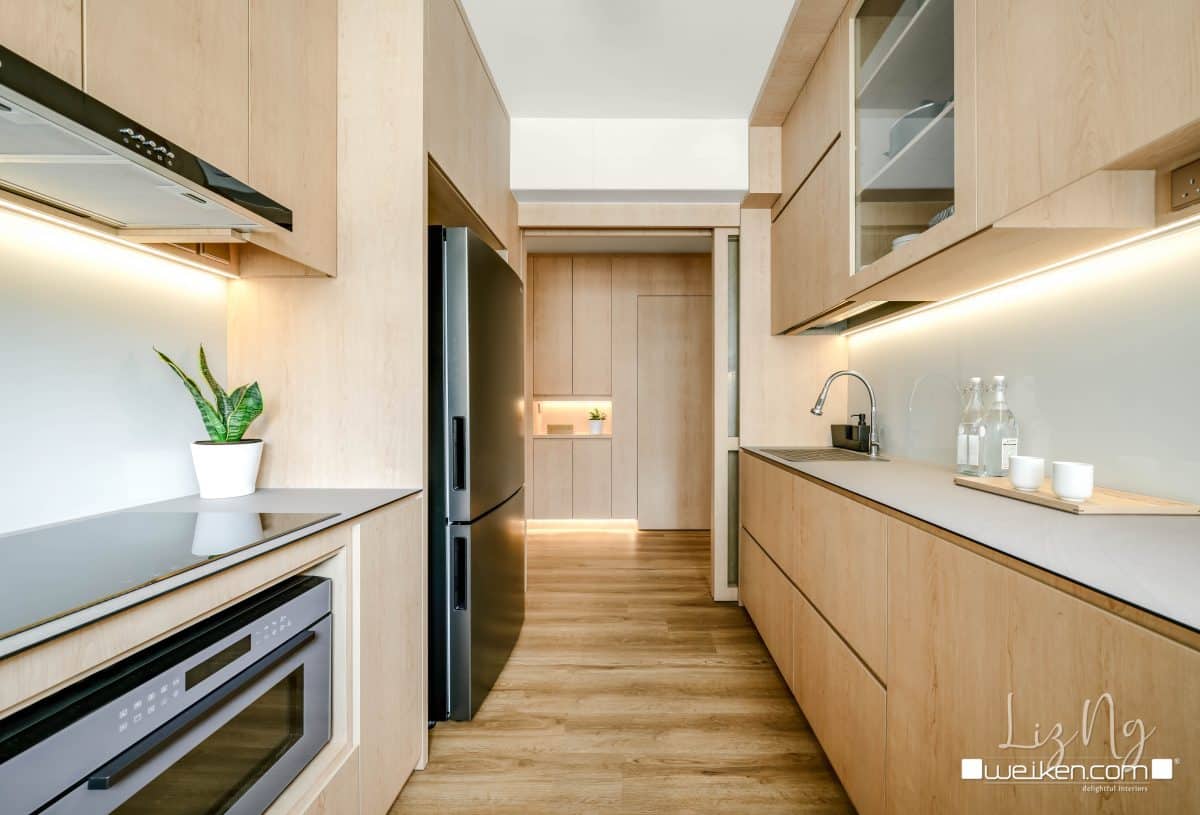
- Space-Saving Solutions
HDB flats are known for their compact layouts. To achieve the Japandi look, focus on decluttering and integrating storage solutions seamlessly into your design. Concealed cabinets, wall-mounted shelves, and built-in furniture can help you make the most of your space.
- Neutral Color Palettes
Opt for a neutral color palette to create an illusion of spaciousness. Lighter shades on the walls and flooring can open up the room and reflect natural light.
- Reflective Surfaces
Mirrors or reflective surfaces can amplify light and make your HDB flat feel more expansive. Consider incorporating mirrored panels or furniture with mirrored accents.
Maximizing Space in Condos
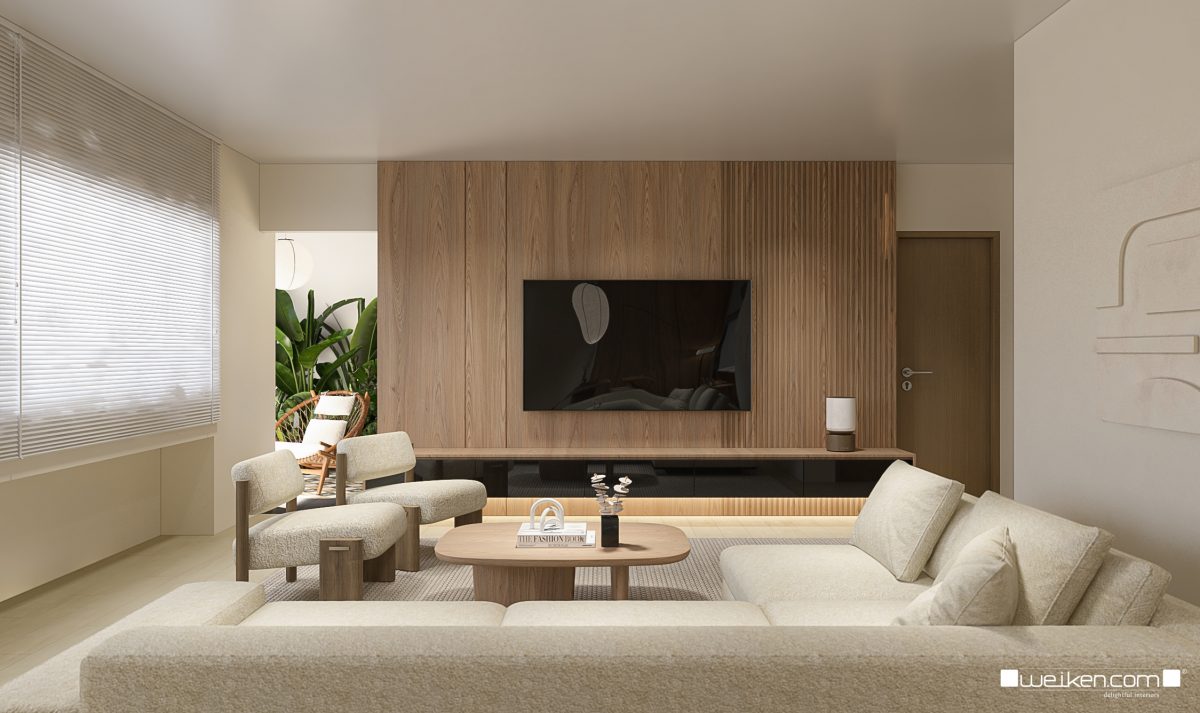
- Open Layouts
Many condos in Singapore boast open floor plans, which align well with Japandi’s spacious and uncluttered ethos. Opt for minimalistic, low-profile furniture to create a sense of flow between rooms.
- Multifunctional Furniture
Given the limited space, invest in multifunctional furniture pieces like sofa beds or dining tables with storage. This not only maximizes functionality but also maintains the minimalist aesthetic.
- Vertical Gardens
If you have a balcony or outdoor space in your condo, consider incorporating a vertical garden. This not only brings nature into your home but also aligns with the Japanese appreciation for greenery.
A Final Thought
In our hectic world, Japandi interior design provides a haven of simplicity and balance. It’s not only about the aesthetics; it’s about cultivating a conscious, calm way of life. As you embark on your Japandi-inspired adventure, keep in mind that the essence of this design trend is about boosting your well-being and creating a peaceful setting where you can truly thrive.
Related Posts
-
QUICK NAVIGATION Wallpaper for Home 2023 The Impact of Wallpaper for Home Design Why Should Use Wallpaper? Wallpapers for Homes: Types and Textures Choosing the Perfect Wallpaper for A House Staying Ahead with Trendy Wallpaper for Home Design Wallpaper Designs for Homes What Is The Best Wallpaper for Bedroom In Singapore? Conclusion Wallpaper for Home […]
-
QUICK NAVIGATION About The Brutalist Interior 5 Key Features of Modern Brutalist Interior Design 5 Practical Tips on How to Incorporate Modern Brutalist Interior Design in Your Home Conclusion About The Brutalist Interior Image source: livingetc.com | Christopher Stark. Design: Lane McNab Interiors Brutalist interior design, a popular interior design theme, has fascinated not only […]
-
QUICK NAVIGATION About Game Room Design … #5 Most Popular Game Room Design Ideas How to Create Low Budget Game Room Designs? About Game Room Design … Transforming a room into a dedicated game room is an exciting project that allows you to immerse yourself in your favorite pastime. Whether you live in an HDB/BTO/Condo […]
-
QUICK NAVIGATION Introduction Understanding the Shower Kerb Functions of a Shower Kerb Classifications of Shower Kerbs Common Models and Types of Shower Kerbs in Singapore Design Options and Finishes Introduction Are you struggling with water spilling onto your bathroom floor? Let’s explore how shower kerbs enhance safety and convenience in your daily routine. Today, we […]
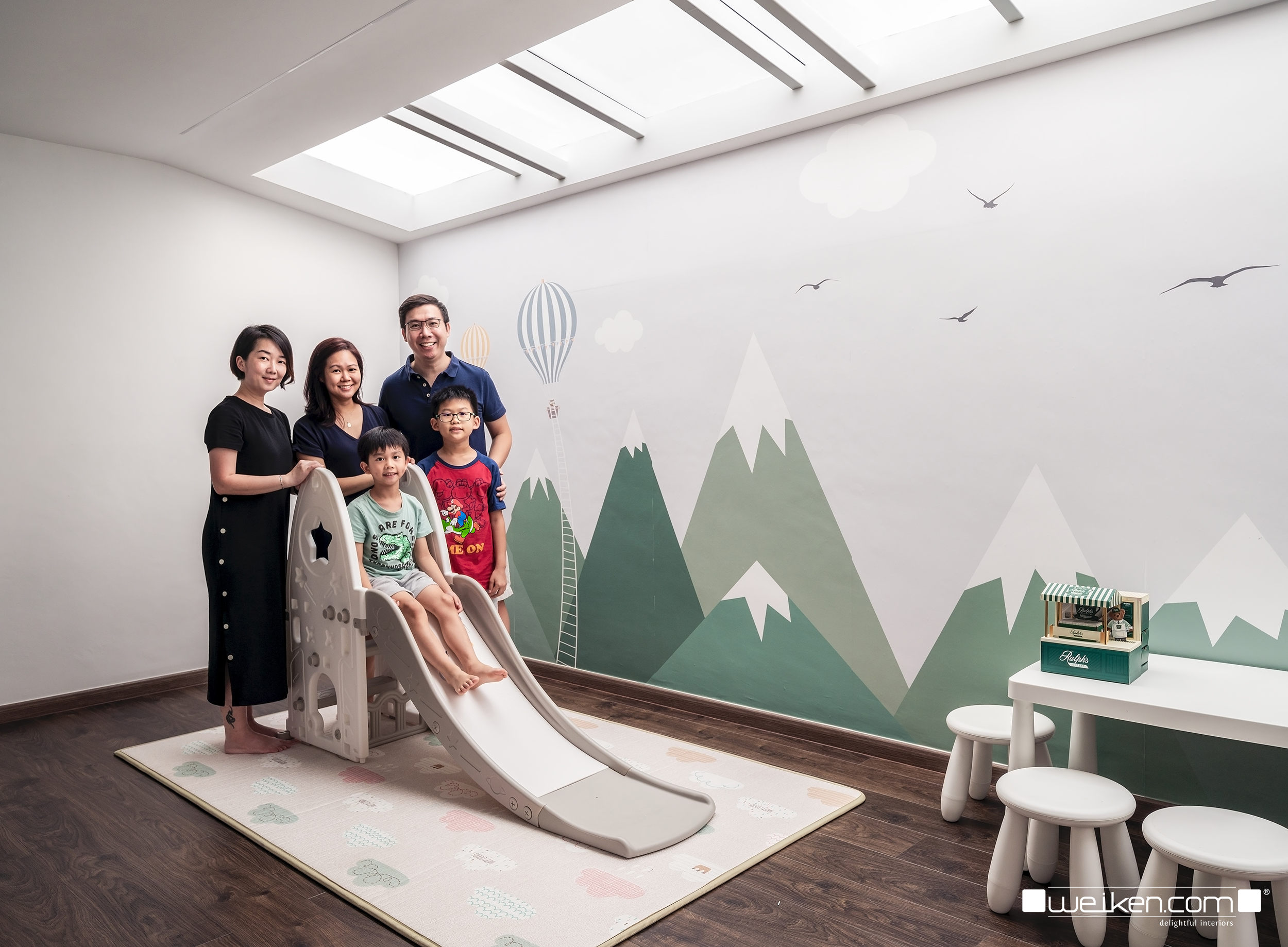
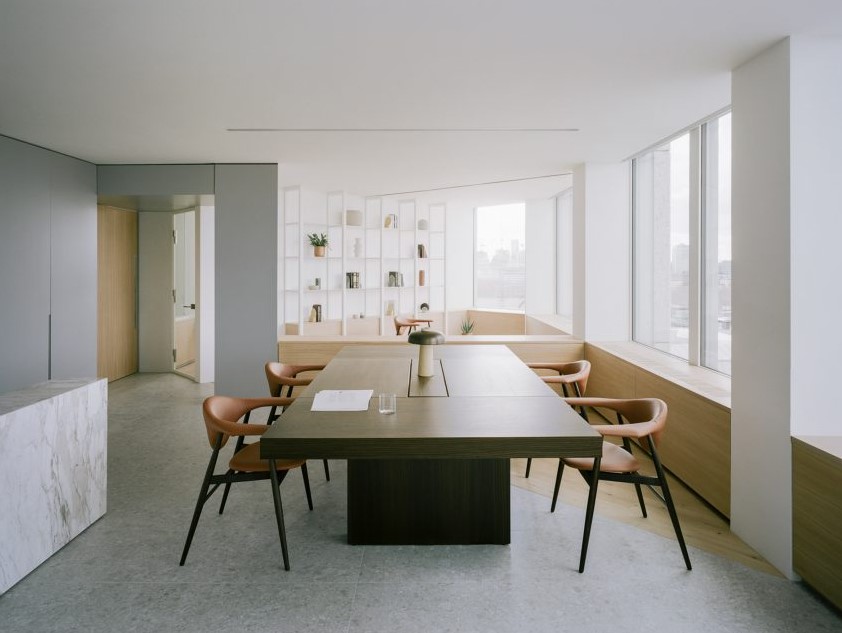
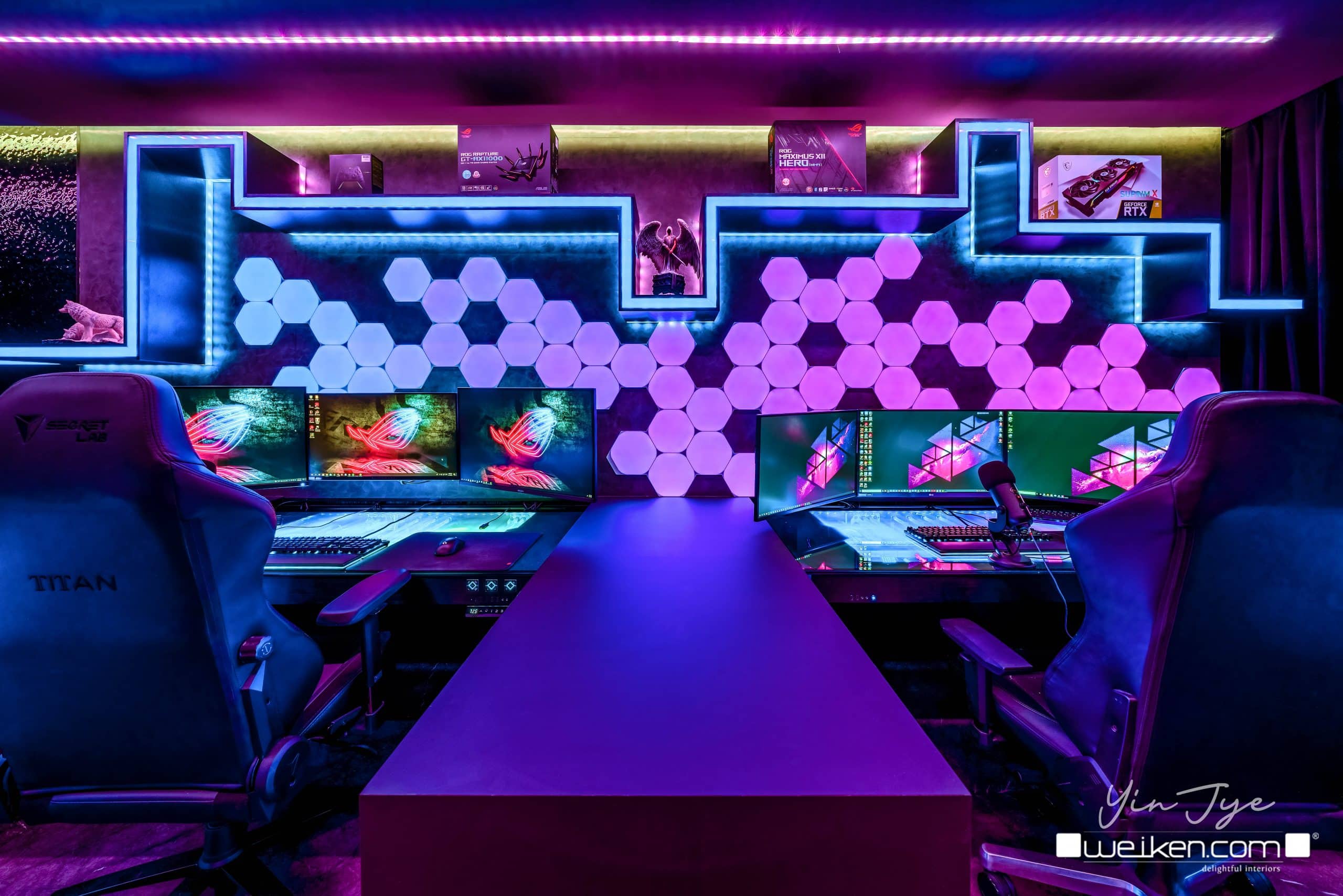
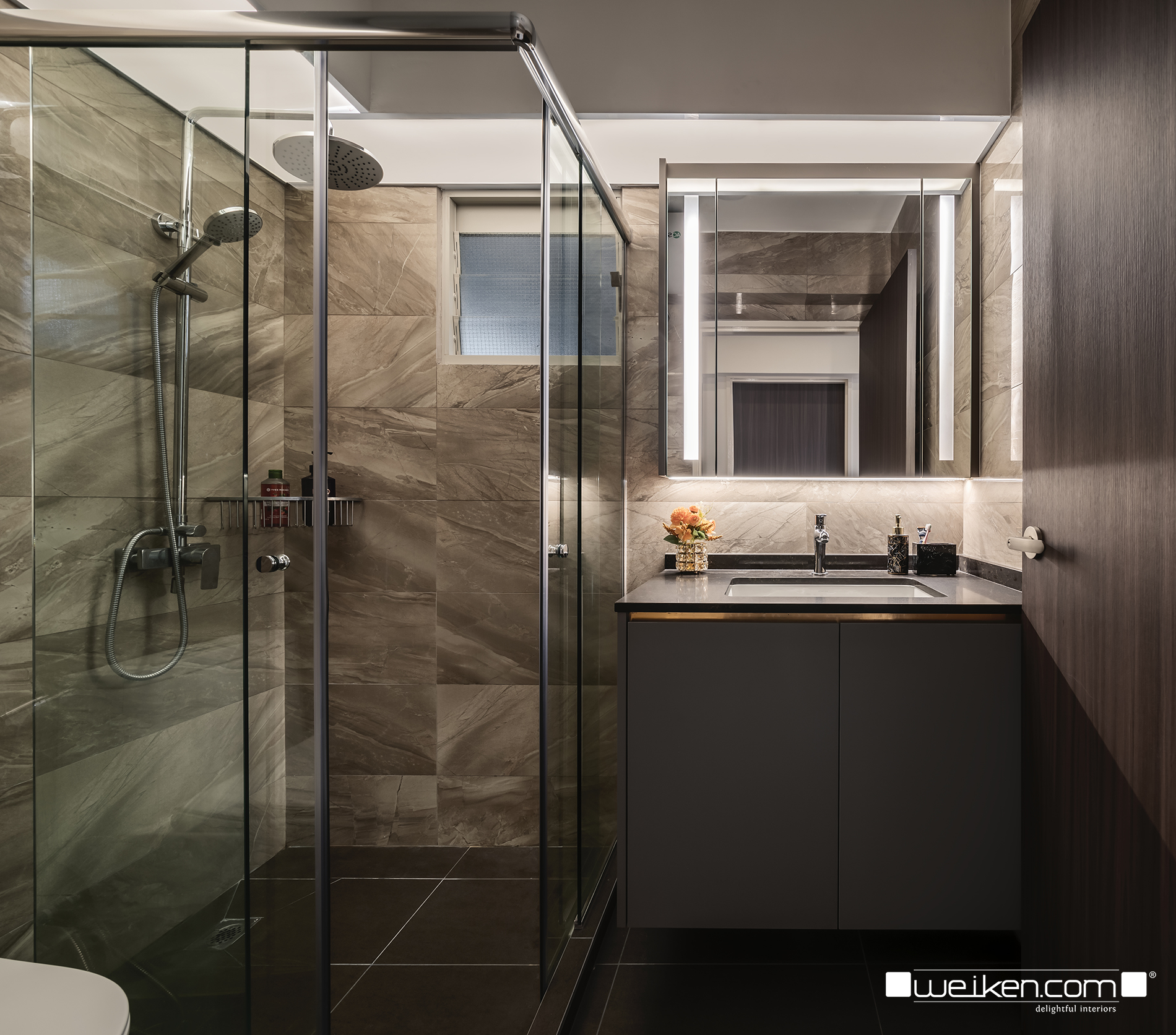
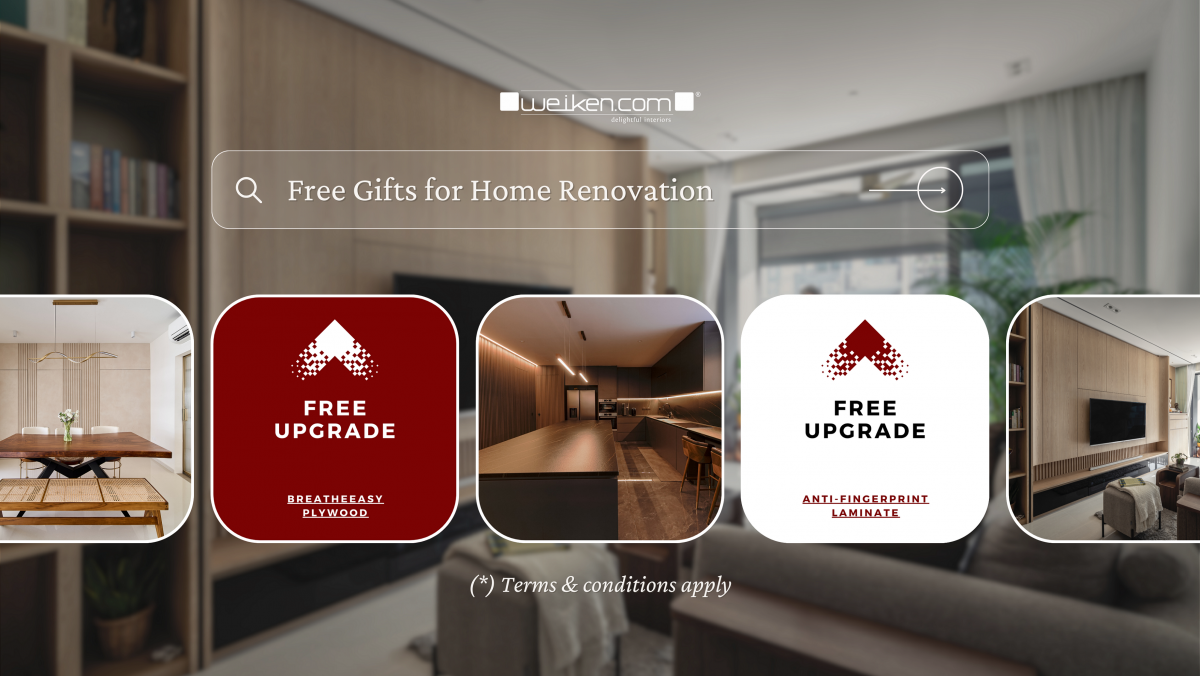
Leave a Reply